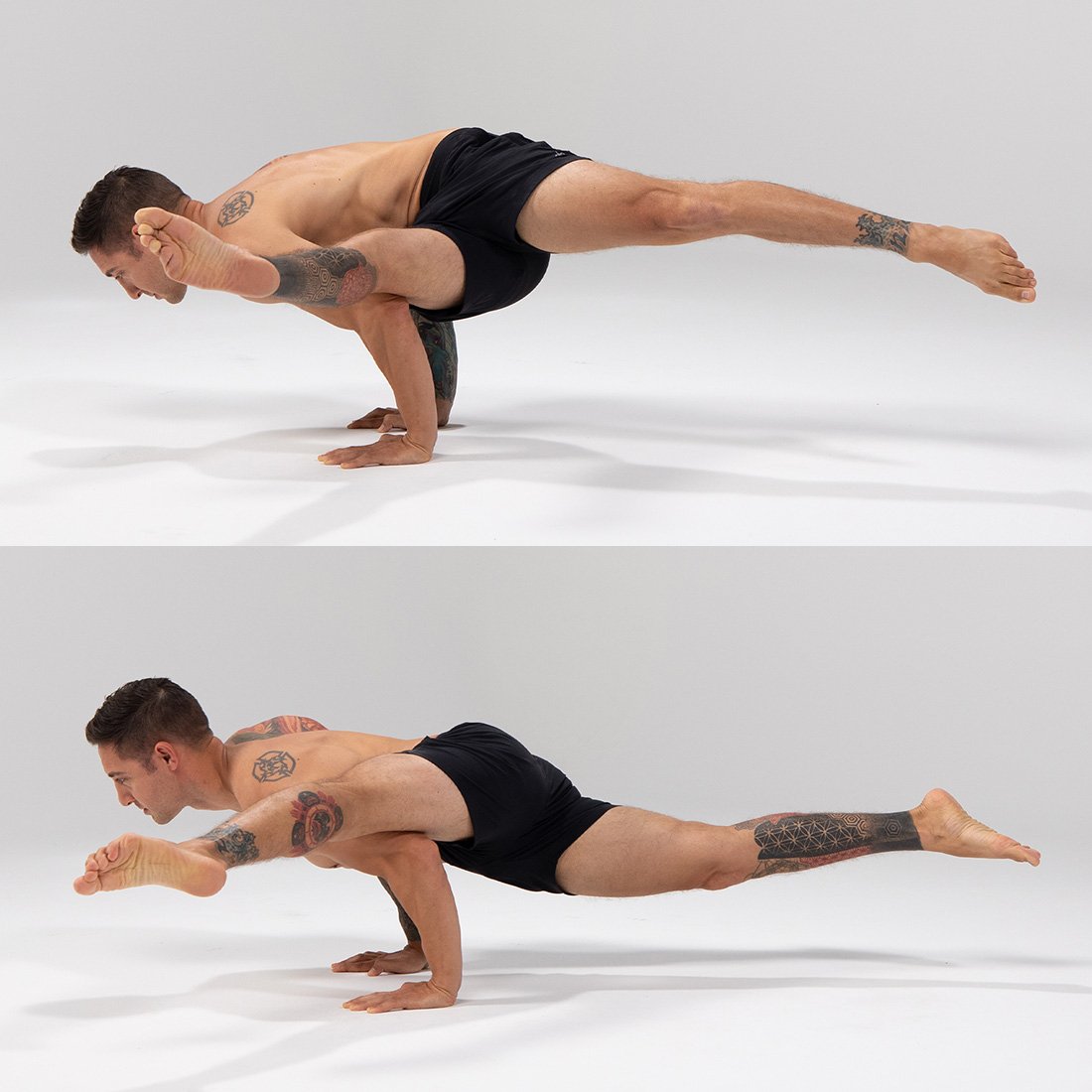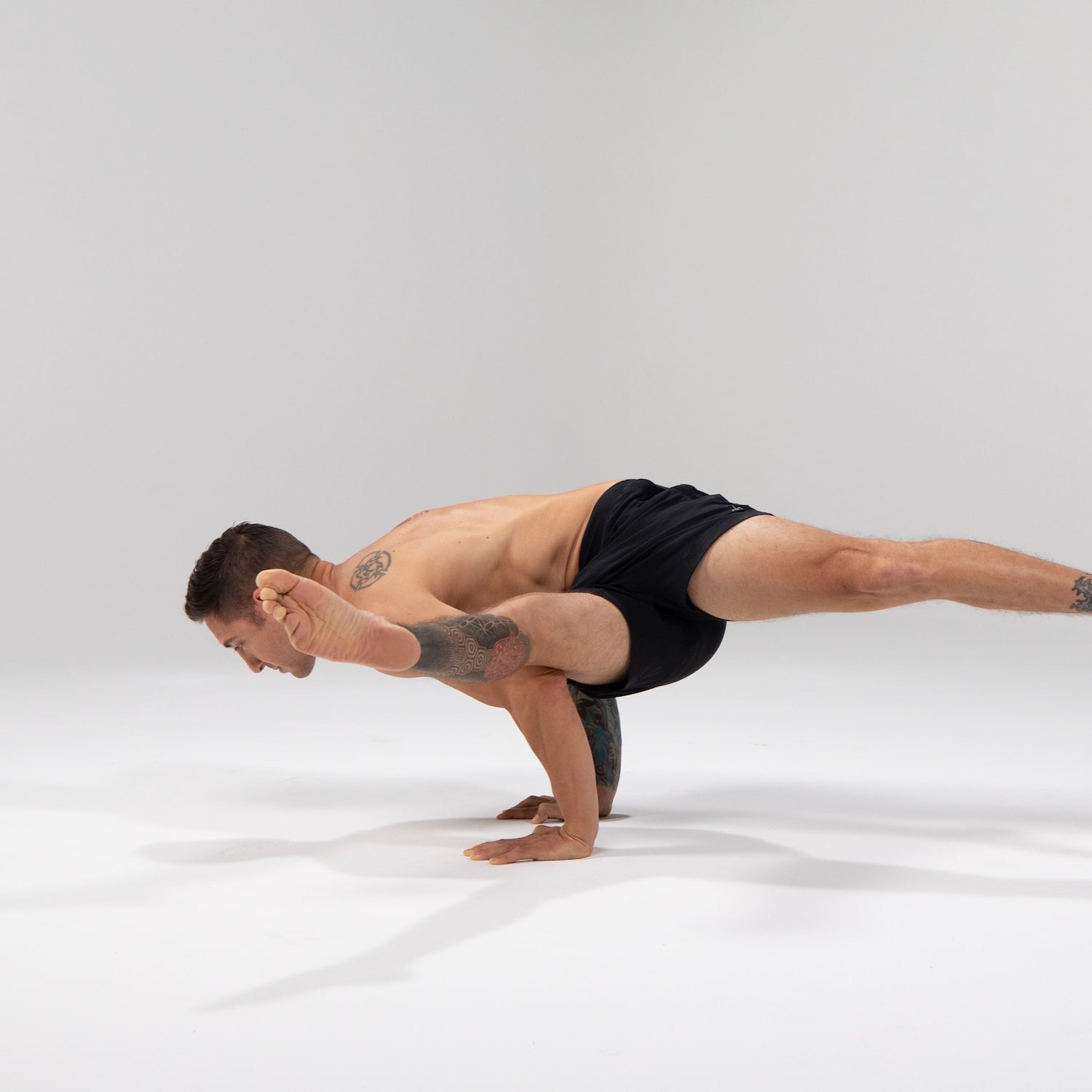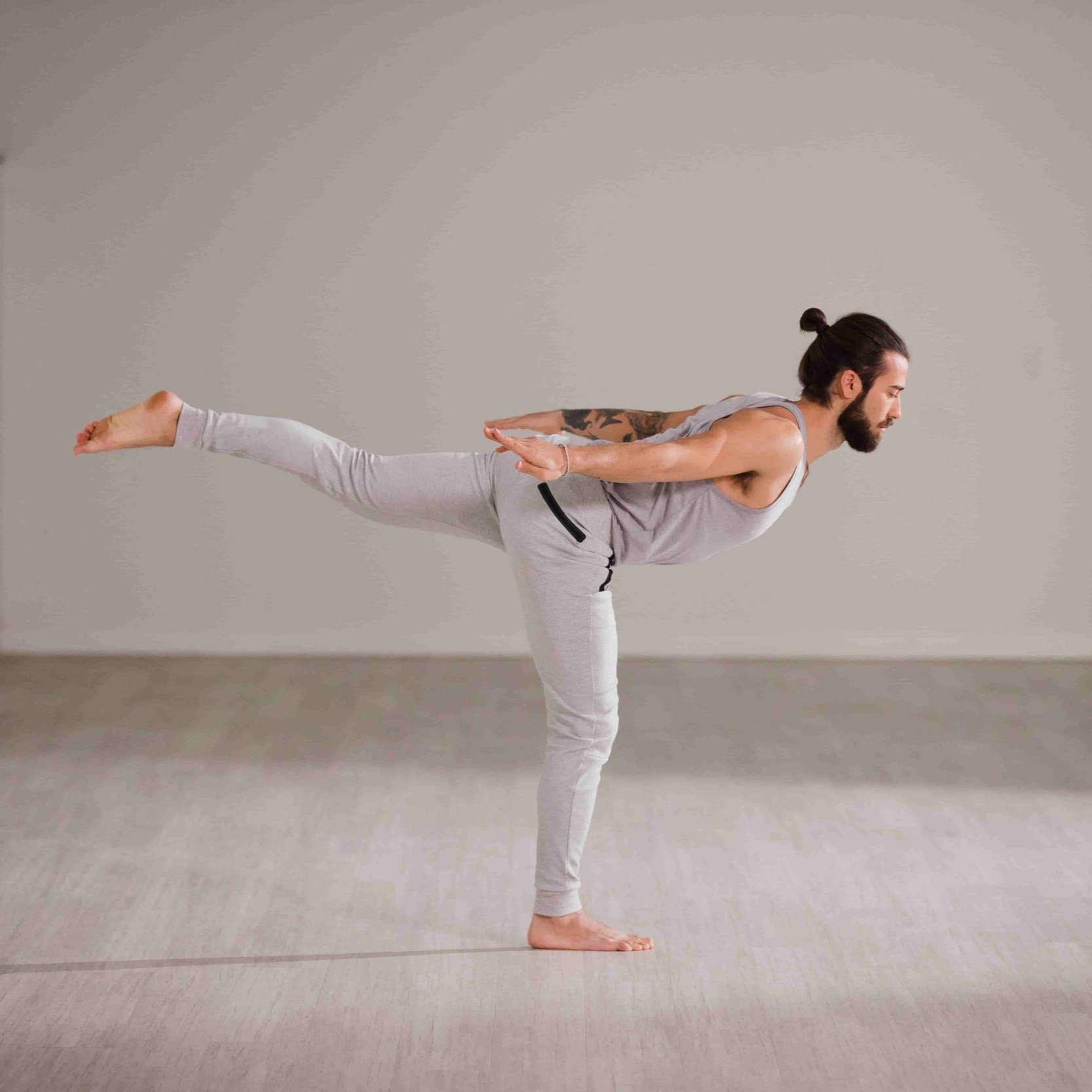Pose Breakdown: One-Legged Wheel Pose
It’s time to really get rolling. One-Legged Wheel Pose (Eka Pada Urdhva Dhanurasana), sometimes called One-Legged Upward Bow Pose or Single-Leg Wheel Pose, adds extra depth to the iconic Wheel Pose arc. This graceful shape strengthens your spine, stretches your whole body, and brings a spark of energy to your day. Looking beautiful on Instagram is just a nice bonus.
Standard, both-feet-on-the-ground Wheel Pose can take a lot of work, and One-Legged Wheel ups the challenge. Make sure to spend a long time warming up, go slow, and get the hang of regular Wheel Pose before you get started. Once you’ve mastered One-Legged Wheel, you can move onto some spicier Wheel Pose variations like Eagle-Leg Wheel.
Benefits of One-Legged Wheel Pose
Strengthens your upper body, spine, and legs
Stretches your whole body
Stimulates your thyroid and pituitary glands
Contraindications
Talk to your doctor first or avoid this pose altogether if you have injuries to your wrists, hips, shoulders, or spine. Same goes for high or low blood pressure, or if you have a headache.
Warm-Up Poses for One-Legged Wheel Pose
Upward Facing Dog
Wild Thing
Low Lunge
Seal Pose
Bridge Pose
Fish Pose
How to Do One-Legged Wheel Pose
Start on your back with your knees bent, shins straight, and your feet hip-distance apart with your toes pointing forward.
Lift your hips upward, firm your inner thighs, and pull your heels closer to your glutes to engage your hamstrings.
Reach your arms up with your palms facing upward and bend at the elbow to bring your palms down near your ears, with your fingers facing either your shoulders or slightly outward.
Push down through your hands and feet and rise onto the crown of your head.
From here, push down again to lift your head off the ground and straighten your arms.
Shorten the pose by walking your feet in and pressing your chest through the gateway of your shoulders.
Bring one foot a little closer to center and balance on that foot while pulling your other leg into your chest with your toes pointed, then extend your leg straight up.
Follow-Up Poses for One-Legged Wheel Pose
Seated Forward Fold
Happy Baby
Child’s Pose
Eka Pada Urdhva Dhanurasana Meaning and History
Eka Pada Urdhva Dhanurasana translates to “One-Legged Upward Facing Bow Pose”: “Eka” means “one,” “pada” means “leg” or “foot,” “urdhva” means “upward,” “dhanu” means “bow,” and “asana” means “posture” or “seat.”
Like many poses that are popular today, standard Wheel Pose starts (Urdhva Dhanurasana) showing up in the work of Pattabhi Jois (modern Ashtanga Yoga) and BKS Iyengar (Iyengar Yoga), who were both disciples of Tirumalai Krishnamacharya in Mysore, now located in southern India. It likely dates back to sometime between 1930 and 1950, at least in the written record.
The one-legged variation appears in Iyengar’s 1966 text “Light on Yoga.” In his teachings, the escalates: In the full expression of the pose, your same-side arm is resting on your raised thigh. “In addition to the benefits derived by Urdhva Dhanurasana,” writes Iyengar, “this beautiful asana develops a sense of balance and gives grace and poise.”
Sometimes this pose is called “Eka Pada Chakrasana,” which is “One-Legged Wheel Pose” translated back into Sanskrit. In both Ashtanga and Iyengar yoga, “Chakrasana” is a transition roll that moves through Plow Pose and looks similar to a somersault.
Nail Wheel Pose challenges from One-Legged Wheel to Alien Wheel with Kayla Nielsen’s Wheel Variations series, available for free with a 14-day trial to Alo Moves.





